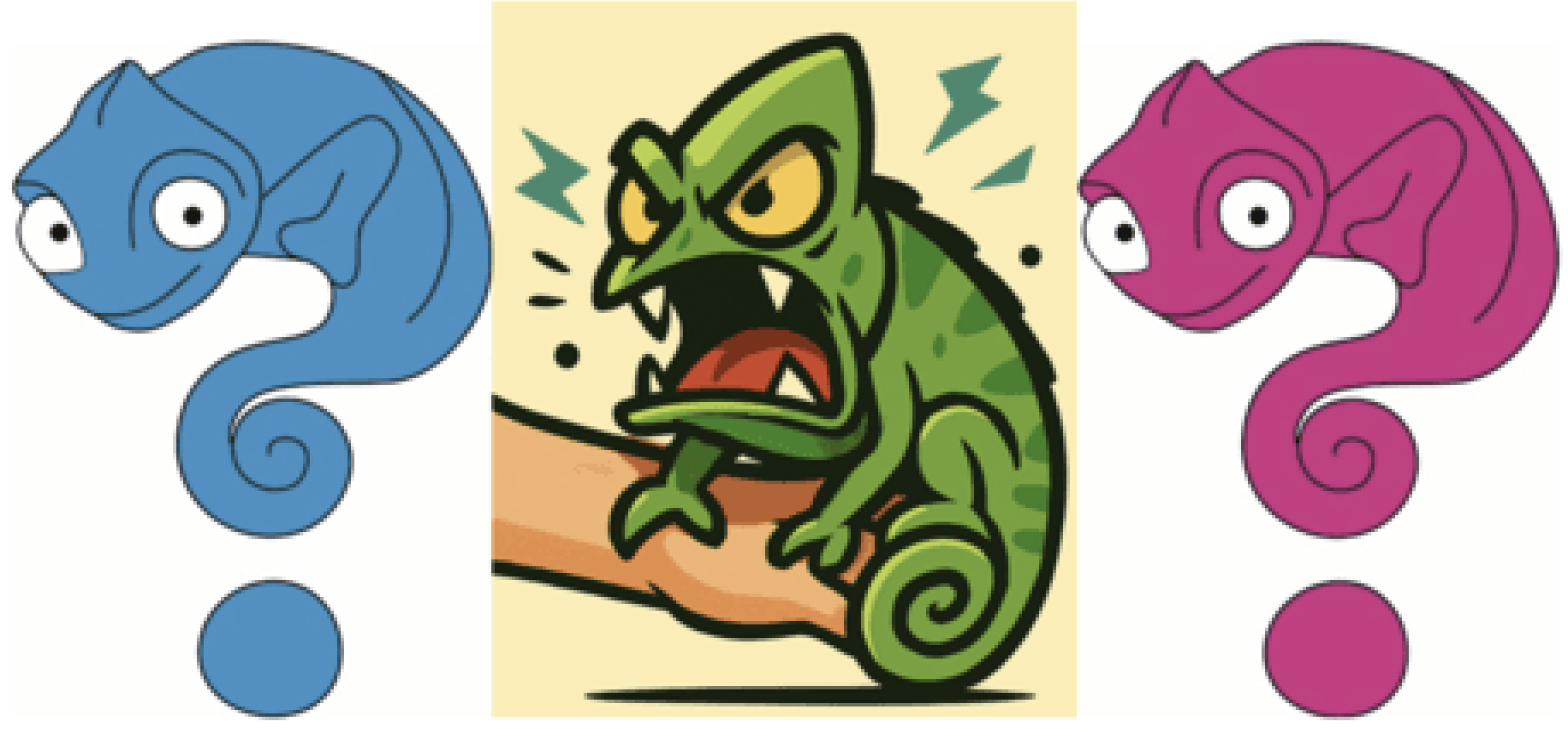Myth 11: “Chameleons Are Aggressive—They Bite!”

Reality: They're not aggressive. They are terrified. And we ourselves are the only reason why.
Introduction: The Bite That Echoed Through Time
Many keepers report their chameleons as "aggressive," "bad-tempered," or "unpredictable biters"—especially when approached in their enclosure, but sometimes even when calmly perched on an arm. The narrative is familiar: "He bit me for no reason!" But the truth is far more complex—and far more humbling.
I remember it vividly. Forty years ago in Yemen, I had a wild Chamaeleo calyptratus crawling up my leg. I was wearing jeans. He paused, looked up at me—me towering over him, staring down—and delivered a bite so powerful it left a hematoma visible for two months. I nearly peed my pants. But it was well deserved. I was the threat. He was the prey. At least he thought so.
How Chameleons Perceive Us
Chameleons don't see us as caretakers. They see us as predators. Our forward-facing eyes, towering size, and erratic movements mimic the exact profile of their natural enemies—primates, birds, and carnivores. To them, we are not neutral observers. We are existential threats.
What Is "Aggression"?
In ethology, aggression refers to behavior intended to assert dominance, defend territory, or compete for resources. It is proactive, goal-oriented, and often ritualized. Chameleons, however, do not exhibit aggression toward humans in this sense. They do not seek to dominate, punish, or "teach us a lesson." Their so-called "aggression" is actually a defensive panic response—a last resort when all other escape options have failed.
Key Terms: Understanding the Behavior
Antipredatory behavior: Any action taken to avoid being detected, attacked, or eaten by a predator. This includes camouflage, freezing, fleeing, or bluffing.
Fear response: A physiological and behavioral reaction to perceived danger. In chameleons, this includes color change, puffing up, gaping, swaying, and biting.
Aposematic behavior: Warning displays that signal danger or unpalatability to predators—such as bright coloration, hissing, or mouth-gaping in chameleons.
These are not signs of hostility. They are signs of survival.
We Are the Trigger
Chameleons do not initiate conflict.
We do.
Every time we reach into their enclosure, loom over them, or force interaction, we are triggering their antipredator circuitry. The bite is not an act of aggression—it is an act of desperation. We are the initiators. They are the reactors.
The Spectrum of Fear Responses
Chameleons exhibit a wide range of fear-driven behaviors, escalating with perceived threat:
- Avoidance: Turning away, hiding, or climbing out of reach
- Escape: Fleeing, jumping from branches, or falling in panic
- Swaying: Mimicking leaves to confuse predators
Pancaking: Pretending to be bigger than in reality, imitating a pancake in form
Hissing and Buzzing: Giving sound to scare the predators
Color change: Darkening or displaying warning patterns
Mouth gaping: A bluff to appear larger or more dangerous
Closed-mouth or open-mouth striking: A warning lunge without intent to injure
Open-mouth biting: A final defensive act when escape fails
Freezing (akinesis): Remaining motionless to avoid detection
Thanatosis (tonic immobility): "Playing dead" as a last resort
Death: In extreme cases, the stress is so overwhelming that the chameleon becomes paralyzed, unable to move or respond. There are documented cases—including my own observations—of chameleons dying from sheer panic after seeing a bird or being handled by a human.
What We Must Do
We must stop blaming chameleons for reacting to fear we provoke. Their "aggression" is not a flaw—it is a mirror. If a chameleon bites, it is not the animal who owes us an apology. We owe them one.
Respect their space.
Avoid unnecessary handling.
Design enclosures that allow retreat and concealment.
Observe without looming.
Let them rest in peace, not in fear.
Chameleons are not aggressive. They are exquisitely sensitive, evolutionarily wired to survive in a world full of predators.
When they bite, they are not attacking.
They are begging us to stop.